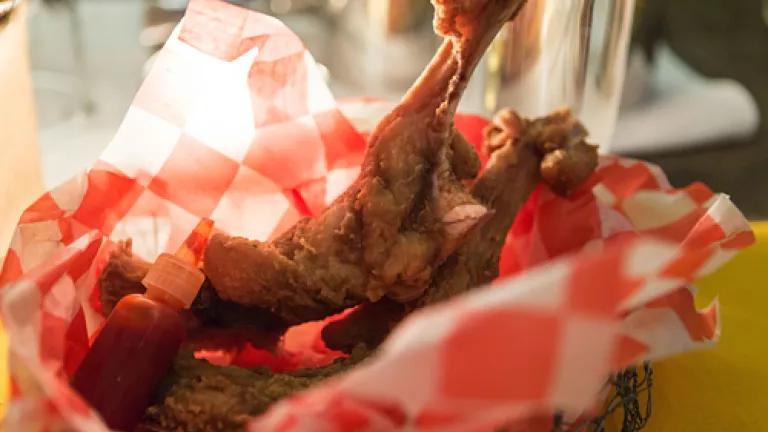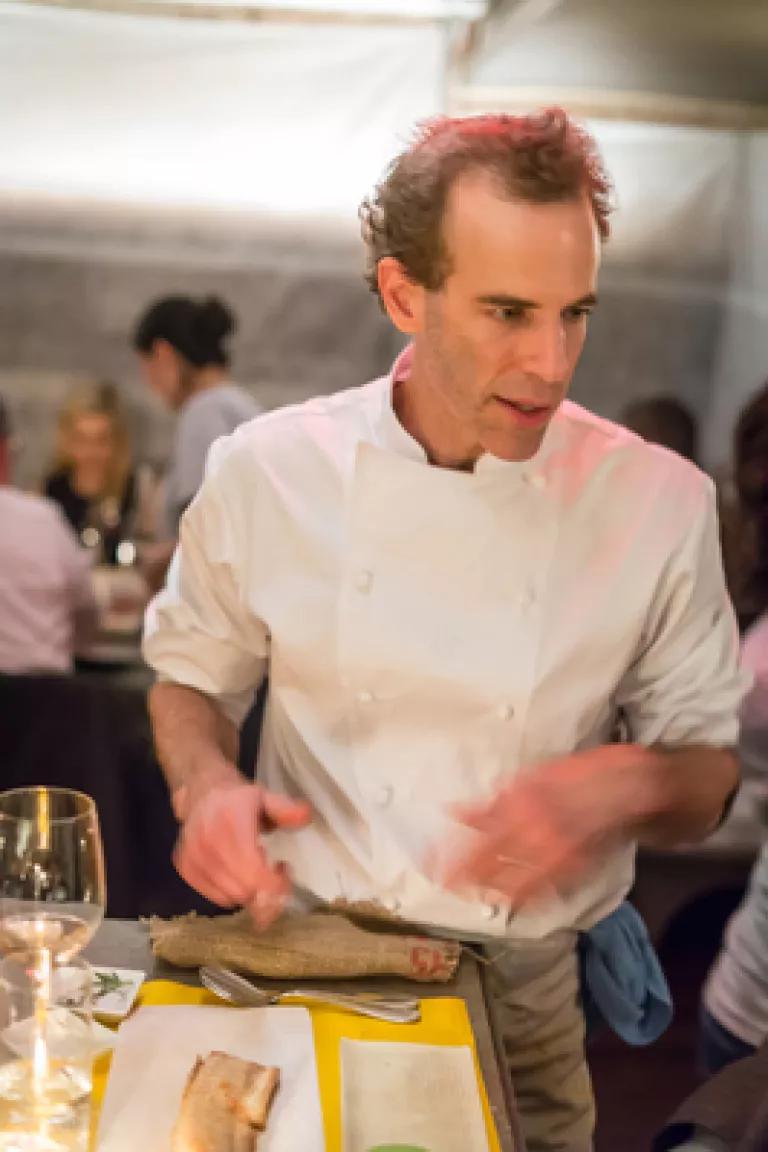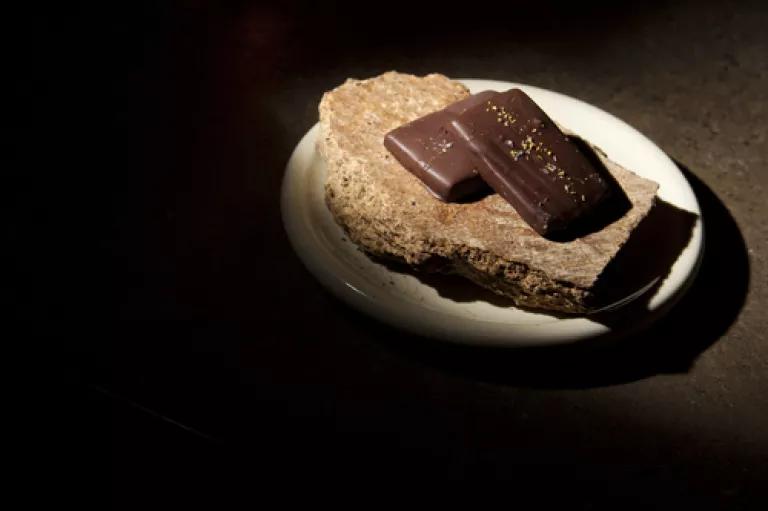
When food is wasted--not just leftovers on plates, but edible food from farms, in grocery stores, and kitchens--it gets dumped into landfills, where it becomes a source of air pollution, water pollution, and even global warming pollution. A few nights ago I tried a new tack in dealing with that pollution.
Reader, I ate it.
"Wings" made from the giant, usually discarded, heads of monkfish.
(photo: Thomas Schauer)
It helped that I was having dinner at WastED, a new popup restaurant focused on the theme of food waste and re-use, conceived by award-wining chef Dan Barber. Food waste is a big problem, and Dan is one of several forward-thinking chefs who are finding ways to solve it. In America, we waste about 40 percent of our food. That's good food, worth about $165 billion a year, that never gets eaten. Food is the number one ingredient in landfills, where it turns into methane, a global warming pollutant far more potent than carbon dioxide.

As you might expect from one of the nation's top chefs, the food at WastED isn't offal. The menu features clever ways to repurpose food, like a "rack of black cod," made from the flesh that clings to the fish's backbone after fileting. It was delicious, but struck me as a lot of work for a small dish.
Other dishes--also delicious--seemed to offer more plausible solutions for reducing food waste on a larger scale. The dumpster dive salad (served with a pistachio and tarragon dressing) used peels and end slices from a facility that makes prepackaged, ready-to-cook vegetables--the kind you see in supermarkets all over the country. Imagine if scraps from all these facilities were picked up and turned into salads, feeding people instead of turning into pollution.
Chef Dan Barber and his team explain the origins of each dish. (photo: Noah Fecks)
We also had a delicious pasta dish made from the misshapen scraps of dough leftover when you switch attachments on a pasta cutting machine. WastED got its scraps from Raffetto's, right in the neighborhood, but my guess is that there are many more tasty scraps out there from many pasta makers. Instead of getting tossed, these nonconformist noodles could become hearty meals.
My favorite dish might have been the veggie burger, which was made from the leftover vegetable pulp generated by Liquiteria, a popular juice joint. WastED took the pulp and pressed it one of the best veggie burgers I've had. This might have been the most scalable idea on the menu. I figure you could make about 8,000 really good veggie burgers out of the ton of pulp coming from Liquiteria every day.

Even dessert was made out of leftovers--a cake from pressed nuts.
(photo: Aliza Eliazarov)
I spoke to a cook named MJ, from Georgia, who presented a dish made of hearts and cores of random vegetables and broken razor clams--which most buyers would have rejected based on looks alone, even though the clam inside is just fine. MJ told us she plans to go back home and bring some of these new ideas back with her.
I don't expect anyone to read this blog post and run off to make dinner out of fish bones and noodle scraps. But it's amazing to see that it can be done, and to realize how much is possible when we rethink how we use food. Congratulations to Chef Dan Barber and his team for finding a new way to inspire eaters and chefs. WastED is only open through the end of the month--but I have a feeling that some of the ideas explored here are going to take root and blossom elsewhere.
[This post is part of our Wasteland series, featuring people, towns, businesses and industries that are finding innovative ways to cut waste, boost efficiency and save money, time and valuable resources.]
